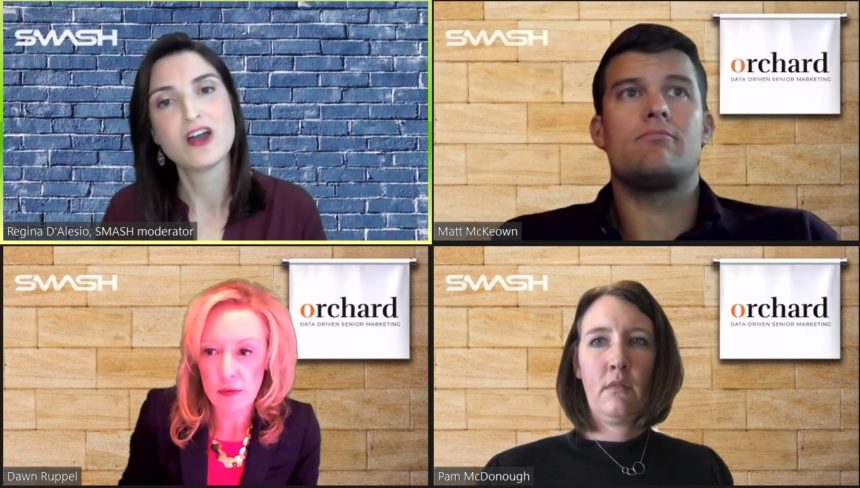
Digital marketing is a multichannel universe, requiring sales and marketing teams to leverage the digital landscape for maximum return, according to a panel of experts speaking at SMASH Week 2020.
“It’s no longer business as usual,” Pam McDonough, accounting director at Cincinnati-based digital marketing firm Orchard, told attendees at this week’s virtual Senior Care Sales & Marketing Summit. McDonough was on a panel discussing best practices in digital marketing for generating community leads.
The digital ecosystem, she said, is a fully integrated landscape with a lot of touchpoints along the way.
Paid search
Paid search is an acquisition channel that provides a strong return on investment, she said.
Not surprisingly, when the pandemic hit, there were significant drops in search volumes across all care areas, including independent living, assisted living, memory care and skilled nursing. But looking at the data year over year, searches trend to the volume of searches at this time last year.
McDonough advised operators to prioritize paid search campaigns based on business objectives and maximizing keywords, implement responsive search ads to increase click-through rates, know where move-ins are coming from and maximize in those areas, and work with team members to adjust according to need.
“This is a multichannel universe. The key is balance,” said Dawn Ruppel, director of marketing and sales at Des Moines, IA-based Life Care Services. “You cannot put all your eggs in one basket. It’s imperative to know your market and how your customer is searching.”
Websites
McDonough called a community’s website its “digital front door” where prospects and their adult children go looking for trust, transparency, education and information.
She said 38% of people will stop engaging if content is unattractive or they don’t like the layout, and 39% will stop engaging if the load time takes too long.
The basic requirements for an engaging, conversion-centric website include an inviting design, simple and easy navigation, conversion focused through key performance indicators, a mobile-first approach, strong search engine optimization and strong integrations.
Key areas to enhance the overall experience of a website, she said, include creating engaging content — videos, testimonials, downloadable guides, COVID-19 safety updates to drive users to take action; engagement tools, including amenities, floor plans, cost calculators and chat functions; and the ability to drive conversions, including click-to-call features, contact forms and calls to action.
“Invest in your website experience,” McDonough said. “It is your most important tool, and making sure it is an ongoing investment that you are constantly working to enhance and experience is going to get you better performance.”
Data analytics
Matt McKeown, founding partner of Orchard, said that data analytics help communities make smarter decisions. Marketers have to remember “you can’t manage what you can’t measure,” he said.
Communities need to build a measurement model that makes business objectives easy to understand, quantifies those business objectives through defined goals, defines key performance indicators and identifies targets, McKeown said.
“We know it’s important to get users back to a website,” he said, encouraging the use of remarketing and user reacquisition strategies, and delivering on user intent. “When you deliver content that matches user intent, time on site goes up.”
Ruppel said that the process means digging deeper to see where people are spending time and delivering on that content, and it also means educating digital teams on trends seen in communities.
“It’s a recipe for success,” she said. “There is a direct correlation to success and, ultimately, occupancy growth when there is alignment. Focus on the expectations and experiences your customers are having and, ultimately, what’s your goal.”




